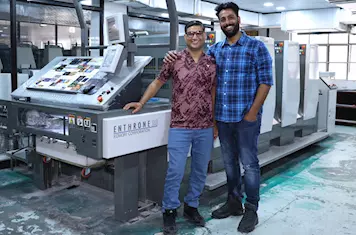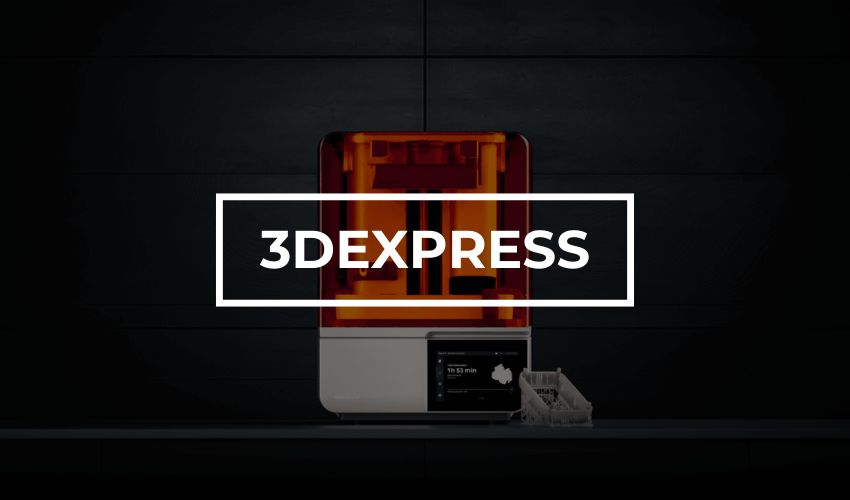IDTechEx Explores Nine Startups Innovating Polymer Additive Manufacturing
Understanding the evolution of polymer 3D printing is essential. This includes examining the shift from low-cost printing technology and materials to slow growth and adoption innovative polymer printing technologies. These include viscous thermosets, carbon fiber composites, and foams. While several new technologies and materials have originated from legacy players like Stratasys and 3D Systems, many have been created by startups looking to push polymer AM’s boundaries in its capabilities and applications.
In IDTechEx’s market report on 3D printing, “Polymer Additive Manufacturing 2023-2033: Technology and Market Outlook”, the polymer AM industry is forecast to rise to over US$21 billion by 2033. This technical market report covers 85 forecast lines for polymer hardware, materials, as well as over 50 profiles of companies, from promising startups to material players and market leaders. To give the reader the most up-to-date information, the report was compiled using extensive primary interviews.
IDTechEx’s primary research revealed many startups seeking to improve all aspects of the polymer AM supply chains, including hardware, software, materials, and some even acting as vertical integrations to deliver parts using innovative AM technologies straight from end users. This article explores a selection of these innovators; further discussion on emerging players can be found in IDTechEx’s report on “Polymer Additive Manufacturing 2023-2033: Technology and Market Outlook”.
Polymer AM Hardware Innovations
Many 3D printer companies have tried to overcome the difficulties inherent in additive manufacturing. Evolve Additive Solutions has pioneered a technology called Selective Electrophotographic Thermoplastic Process. This technology combines elements from powder bed fusion and sheet lamination with 2D laser printing. STEP involves image-taking onto a loaded drum. After image capture, the areas that are discharged become visible. The drum is passed through a bed made of thermoplastic particles. This layer picks up particles and deposits them onto the drum. This layer is transferred to a conveyor belt, and then to the build station. The layer is aligned to and fused with the part using heat pressure. With STEP, you can achieve a very high rate of build (up to 100 cm3/hour), which allows Evolve additive states’ Scalable Volume Production printers (SVP) to more convincingly compete against injection molding at medium-high parts volumes.
Developers of volumetric additive manufacture are currently trying to turn the 2.5D layer-wise nature in additive manufacturing upside down. VAM is a set of technologies that allows you to print a 3D object one-step, instead of layer-by–layer. VAM also has the potential to make it possible for significant speed and surface improvement improvements, which are both persistent problems in polymer additive manufacture. Xolo, and Readily3D are two startups that have commercialized VAM. They are both developing VAM technologies called Xolography or Tomographic 3D printing. Xolo focuses more on photopolymer resins while Readily3D focuses on biocompatible materials for medical purposes, such as photosensitive acrylates and silicones. The main challenge for both companies is to overcome the material limitations inherent in 3D printing photosensitive materials. VAM offers a unique opportunity to overcome two of the major drawbacks in 3D printing, and possibly access new applications.
Innovations in Polymer AM Materials
Polymer 3D printing material has many limitations. Materials players in the industry are looking to overcome these limitations given the market’s importance to 3D printing materials. IDTechEx forecasts that polymer AM material revenue will surpass that of polymer am hardware sales by 2033 and will reach US$15 billion. These forecasts by IDTechEx show how polymer AM material will change over the next ten year.
Source: IDTechEx
Source: IDTechEx
Different startups are looking to address different issues with polymer AM materials. AlphaPowders for instance is seeking to reduce the cost and availability of thermoplastics powders. IDTechEx projects that these will be the most-in-demand polymer AM materials type by 2033. End-users worry about material costs, since 3D printing materials are more expensive than their equivalent injection molding products. AlphaPowders hopes to reduce these costs through equipment that converts inexpensively synthesized plastic powder into AM grade powder. This lowers the price per kilogram for AM thermoplastic.
Although polymer 3D printers are often considered unsuitable to end-use functional applications due to their high performance, Tiamet3D is one of the startups creating high-performance materials. Tiamet3D’s composite PLA filament with nano-diamonds aims to make 3D printing of performance components more accessible.
Sustainability in manufacturing is an important consideration for all players, across all verticals. This includes automotive, consumer goods, and aerospace. Although 3D printing can reduce materials waste, the majority of polymer 3D printing materials are made from fossil-fuel-based materials. Reflow, a startup that uses recycled plastic to produce filaments, is looking to improve the sustainability of polymer 3D printer materials. Reflow claims that their PETG (polyethylene triephthalate glycol), filament is attractive in material properties and uses recycled PET plastic as a feedstock. The additive manufacturing industry is adding a new dimension to sustainability discussions by introducing sustainable materials for 3D printing.
Polymer AM Part Production Innovations
In polymer AM, a growing number of innovators are developing their own hardware and/or materials in order to directly supply parts to end-users. Not only do these startups innovate on their printing technology and feedstock, but they’re also innovating with their choice of business model, a change from the classic 3D printer manufacturer. Bond3D is an example of a company that supplies parts made from high-temperature thermoplasticrod extrusion technology. This reduces voids, and improves end-part performance. Arevo is another example of Arevo’s continuous carbon fiber composite extrusion process that has been used in the furniture and sporting goods industries. OPT Industries is one such startup. It uses a roll-to–roll stereolithography approach (RAMP), to create nasal swabs for medical applications. It doesn’t matter what technology these startups use, it is clear that they are looking for new ways to get polymer 3D printed parts to end-users.
This article highlights the diversity of activity in the market for polymer additive manufacturing. For detailed profiles on many of the companies mentioned in this article and many more, please see the IDTechEx report “Polymer Additive Manufacturing 2023-2033: Technology and Market Outlook”. This report provides a detailed analysis of the industry and includes forecasts as well as key technical insights.
For more information on this report, please visit www.IDTechEx.com/PolymerAM or for the full portfolio of 3D printing research available from IDTechEx, please visit here.
About IDTechEx
IDTechEx helps you make strategic business decisions by providing Subscription, Consultancy, and Research products that help you to profit from emerging technologies. For more information, contact [email protected] or visit www.IDTechEx.com.


